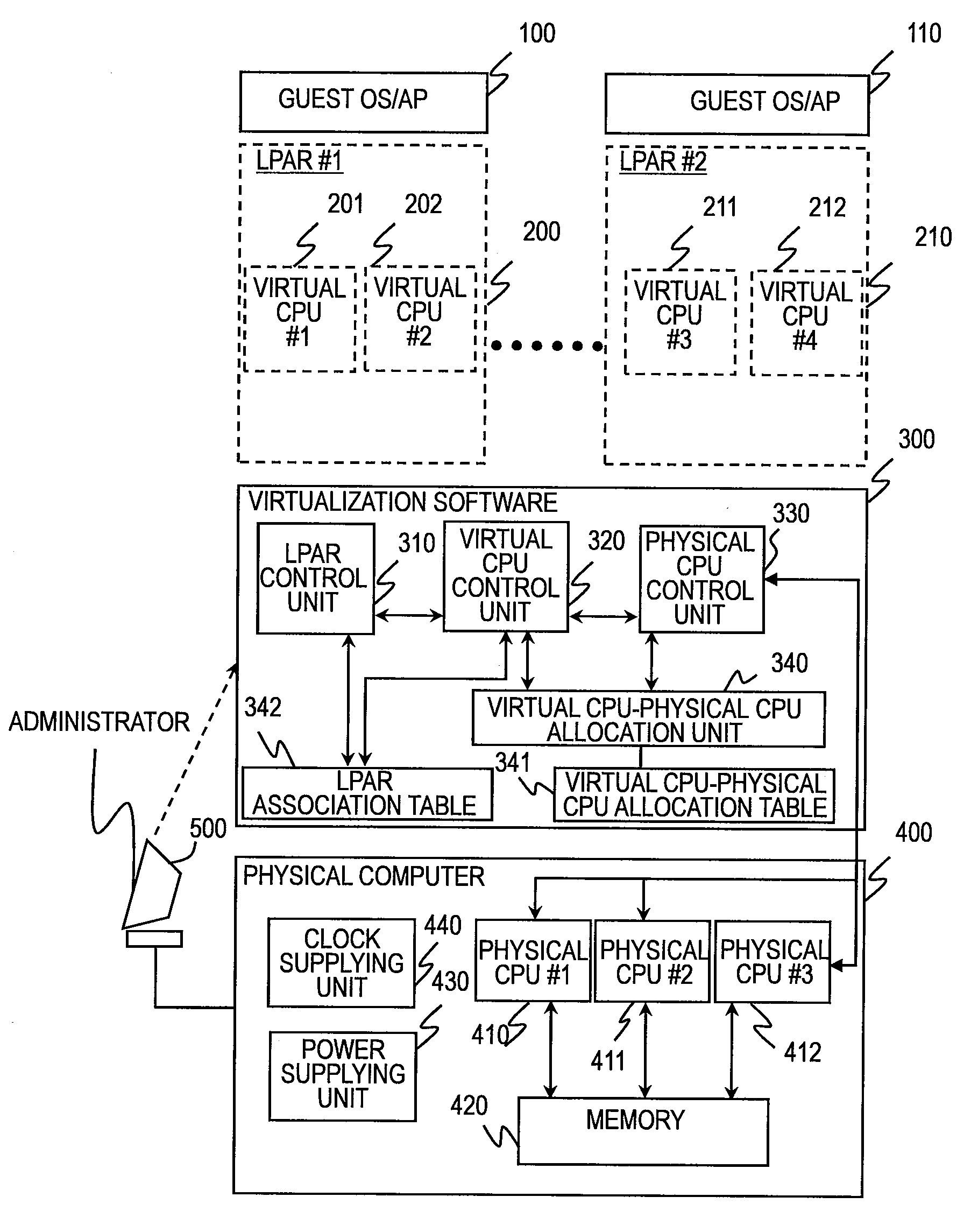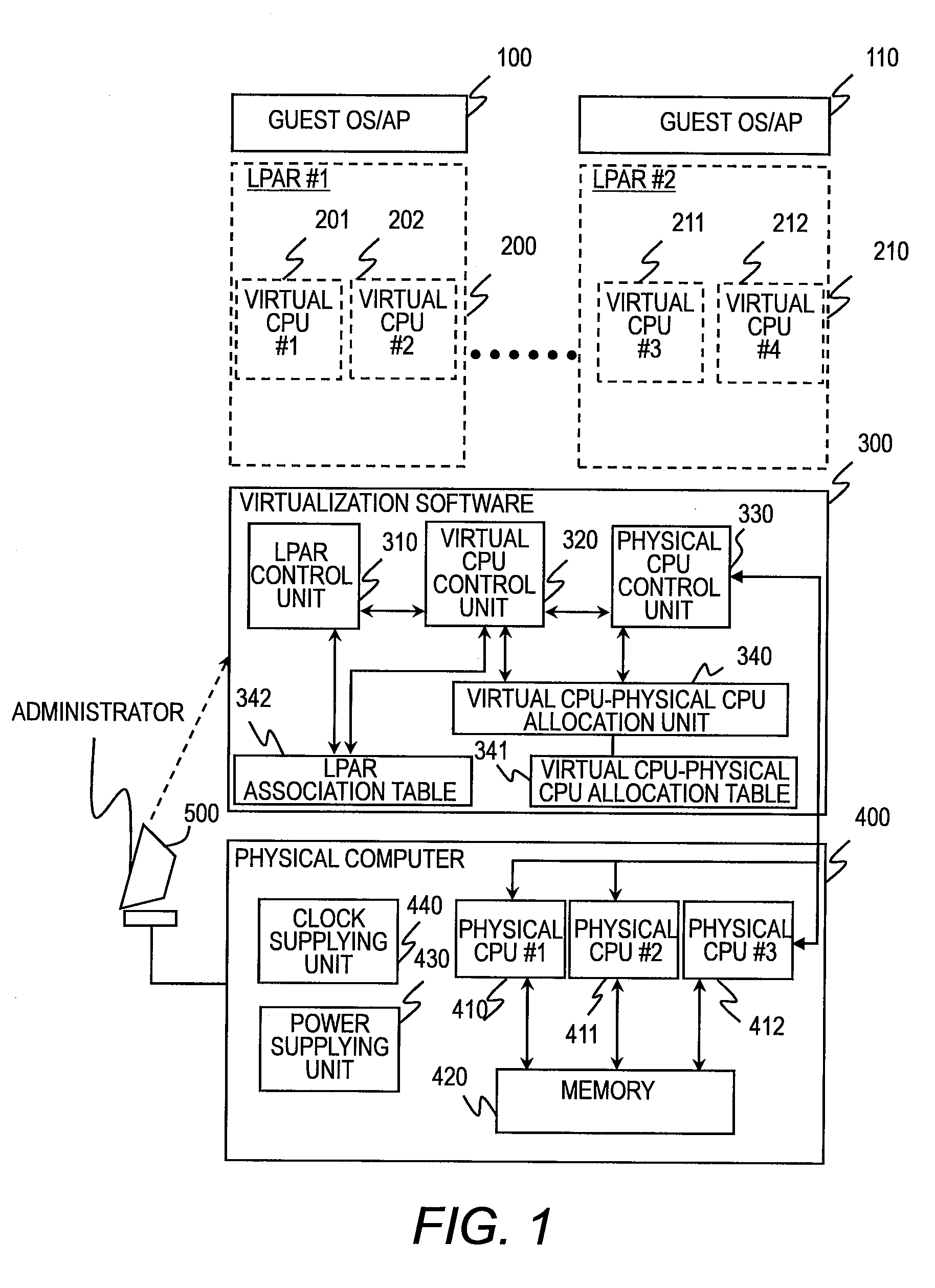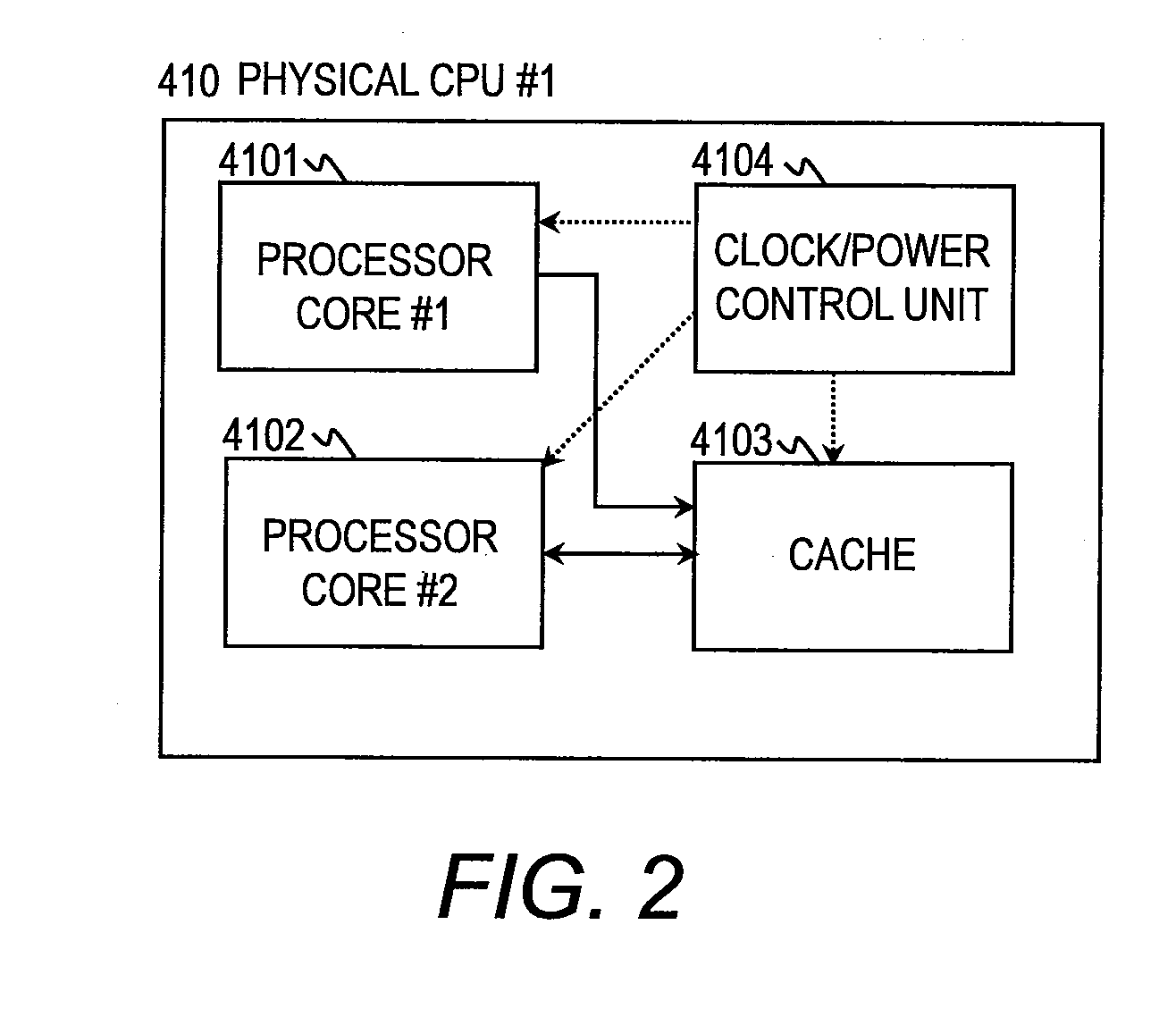Power control method for virtual machine and virtual computer system
a technology of virtual machines and computer systems, applied in program control, multi-programming arrangements, instruments, etc., can solve the problems of physical cpus not being able to control the host os, reducing power consumption, physical cpus, etc., to reduce the and reduce power consumption of physical computers.
- Summary
- Abstract
- Description
- Claims
- Application Information
AI Technical Summary
Benefits of technology
Problems solved by technology
Method used
Image
Examples
second embodiment
[0086]FIGS. 7 to 9 illustrate a second embodiment of this invention in which the physical CPU control unit 330 of the first embodiment controls the operating clock of the physical CPUs 410 to 412, and the virtual CPU-physical CPU allocation unit 340 controls virtual CPU allocation in a manner that maximizes the number of physical CPUs in a sleep state when a virtual CPU is deleted. The configuration of the physical computer 400 in the second embodiment is the same as in the first embodiment. In the virtualization software 300 of the second embodiment, some of functions of the virtual CPU-physical CPU allocation unit 340 and the physical CPU control unit 330 differ from the first embodiment, and a virtual CPU-physical CPU allocation table 341A is structured in some parts differently from the virtual CPU-physical CPU allocation table 341 of the first embodiment.
[0087]FIG. 7 is an explanatory diagram illustrating the configuration of the virtual CPU-physical CPU allocation table 34IA w...
third embodiment
[0115]FIG. 11 is a flow chart illustrating an example of virtual CPU deleting processing that is executed by virtualization software according to a third embodiment of this invention. FIG. 11 is a partially modified version of the flow chart of FIG. 9 illustrating the virtual CPU deleting processing that is executed by the virtualization software 300 according to the second embodiment. The rest is the same as in the second embodiment.
[0116]The flow chart of FIG. 11 is obtained by inserting an additional step, Step S40, between Steps S32 and S33 of the flow chart of FIG. 9. Step S40 is a step of changing the operating clock frequency of the physical CPUs 410 to 412.
[0117]In Step S40, whether or not the operating clock frequency of one of the physical CPUs 410 to 412 that is currently selected can be changed is judged as in Steps S21 and S22 of FIG. 8 described in the second embodiment and, when it is possible, the operating clock frequency is changed to suit new allocation.
[0118]Spec...
fourth embodiment
[0123]FIG. 13 is a block diagram illustrating a configuration of a virtual computer system according to a fourth embodiment of this invention. In FIG. 13, the virtual CPU utilization ratio (hereinafter referred to as operation ratio) of each guest OS is monitored by operation ratio monitoring middleware 500 and 510, which are run on the guest OSs 100 and 110 of the first embodiment and which notifies the virtualization software 300 of the operation ratio. The virtual CPU-physical CPU allocation unit 340 of the virtualization software 300 of FIG. 13 controls allocation of virtual CPUs to physical CPUs based on the virtual CPU operation ratio.
[0124]FIG. 14 is an explanatory diagram illustrating an example of a virtual CPU-physical CPU allocation table that is managed by virtualization software according to the fourth embodiment. The virtual CPU-physical CPU allocation unit 340 manages a virtual CPU-physical CPU allocation table 341B, which is, as illustrated in FIG. 14, obtained by ad...
PUM
 Login to View More
Login to View More Abstract
Description
Claims
Application Information
 Login to View More
Login to View More - R&D
- Intellectual Property
- Life Sciences
- Materials
- Tech Scout
- Unparalleled Data Quality
- Higher Quality Content
- 60% Fewer Hallucinations
Browse by: Latest US Patents, China's latest patents, Technical Efficacy Thesaurus, Application Domain, Technology Topic, Popular Technical Reports.
© 2025 PatSnap. All rights reserved.Legal|Privacy policy|Modern Slavery Act Transparency Statement|Sitemap|About US| Contact US: help@patsnap.com



